Selkies in Scotland
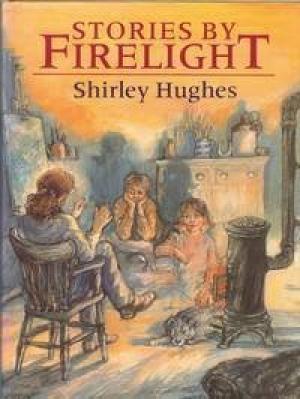
Ann Lazim
I believe my first encounter with a selkie was in a haunting retelling in Shirley Hughes’ compilation of stories and poems Stories by Firelight (1993).
A girl staying with her mother’s artist friend Morag hears what sounds like a woman’s voice coming from the sea. This leads to Morag telling her the sad story of a seal woman who sheds her skin, takes human form, becomes a fisherman’s wife and bears him children. However, the desire to don the sealskin again and return to the sea is eventually too strong to resist.
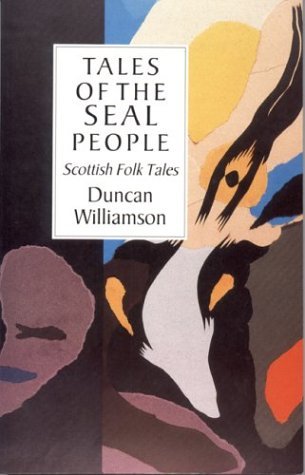
Since then, I’ve heard and read various versions of this tale, most of which come from the coastal regions of Scotland and Ireland. One of Scotland’s foremost oral storytellers, the traveller Duncan Williamson, retold many of those which he heard directly from crofters and fishermen along Loch Fyne. Retellings of 14 of these were collected in his Tales of the Seal People (1992). In his introduction the opening words are ‘In all my collections of stories from Scotland, the most beautiful are those that have been told to me by the fishermen and crofting folk of the West Coast. And these stories are of the seal people.’ Each story is prefaced by a description of where and from whom he heard it. Many of the stories from this collection together with others published elsewhere were reprinted in The Land of the Seal People (2010), edited by his widow, Linda. I was fortunate to hear Duncan telling stories at one of the Federation of Children’s Book Groups annual conferences in Edinburgh in 1994 and subsequently several times at the Beyond the Border Storytelling Festival in south Wales. His work as a collector of folk tales, as an oral storyteller and his collaboration with Linda to record written versions so they could be shared more widely is a significant contribution to Scottish literature for adults and children.
Haunting selkie tales have inspired many retellings for children in picture-book and novel form.

In Secret of the Ron Mor Skerry (2017), written and illustrated by Rosalie K. Fry, ten-year-old Fiona returns to the Scottish isles, where she spent her early years, to stay with her grandparents who have always lived there. There is a deep sadness in the family as Fiona’s little brother Jamie is believed to have been lost at sea some years before. The strong connection to people and place are important in her determination to find Jamie and retain their island home, as is their mysterious ancestry related to the seal people. This evocative short novel is the book on which the evocative film The Secret of Roan Inish (1994), which transposes the setting to Ireland, is based.
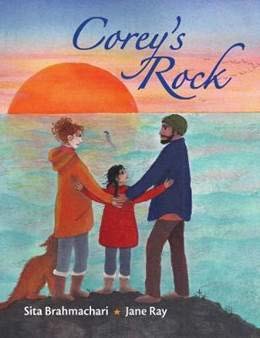
Sita Brahmachari subtly and skilfully weaves a selkie skin into another story about a lost brother, Corey’s Rock (2018), which has a contemporary setting in the Orkney Islands. Jane Ray’s luminous illustrations evoke the aquatic environment and the liminal space between sand and sea where Isla and her family are seeking a new beginning following the death of her brother Corey. Halfway through the story a Celtic knot design common to Isla’s father’s Yoruba heritage and her mother’s Orcadian one twines across the page visually uniting the strands of her dual heritage. This book is a beautiful collaboration between an author and illustrator which brings together themes of loss and new beginnings, friendship and cultural heritage.
Elizabeth Laird has strong Scottish roots and in Song of the Dolphin Boy (2018), she creates a shapeshifting mother who is a dolphin rather than a seal but the link with the selkie storytelling tradition is clear. Finn lives with his father in a small coastal community in Scotland and is initially rejected by the other children in the village. After accidentally falling into the sea, he discovers why he feels different.
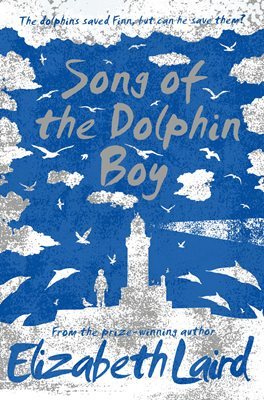
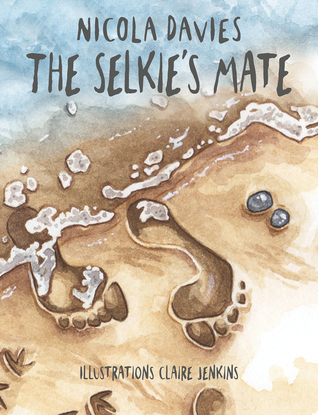
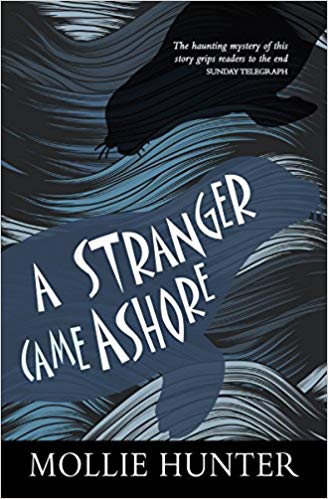
In Nicola Davies’ version set on a Hebridean island, The Selkie’s Mate (2017), one of the Shadow & Light series of illustrated short stories from folklore, a Selkie entrusts a young crofter with her sealskin, on condition that he takes care of it and returns it to her if she asks. After seven years of happiness during which time she gives birth to twins, the Selkie asks the crofter to give her back her skin. Three times she asks him, but each time he procrastinates, crafting gifts that combine natural elements of land and sea. The loss of trust wears away at their relationship until one day their children become the agents of their mother’s restoration to her old life.
One of the foremost authors of Scottish children’s literature, Mollie Hunter, wrote A Stranger Came Ashore (1975), a modern classic that draws hauntingly on selkie folklore. When Finn Learson appears in Black Ness, a village in the Shetland Isles, everyone assumes he is the survivor of a shipwreck. As the stranger insinuates himself into the community, 12-year-old Robbie starts to suspect that Finn is not who he appears to be and that his motives may be malign.
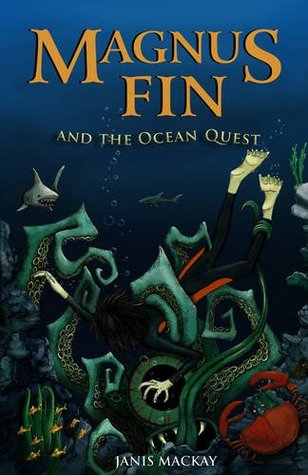
Janis Mackay was born and now resides again in Edinburgh. She spent some time living by the sea in the north of Scotland, surely the inspiration for her Magnus Fin trilogy featuring a boy who is half selkie. Magnus Fin and the Ocean Quest won the Kelpies prize in 2009. The trilogy continues with Magnus Fin and the Moonlight Mission (2011) and concludes with Magnus Fin and the Selkie Secret (2012). Janis Mackay has also written the text for the picture book The Selkie Girl (2014), illustrated by Ruchi Mhasane. Fergus, son of a Scottish fisherman, finds ‘a dark shiny fur speckled with silver’ on the shore and takes home his treasure, not realising it belongs to a selkie girl who has shed it while on land. She seeks him out and he returns her special skin. The two children become fast friends and selkie Shonagh ensures Fergus’s father’s fishing nets are always full.
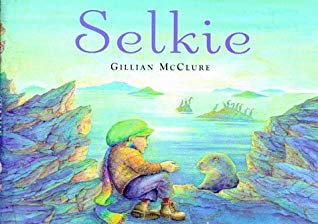
Friendship rather than romance is also at the heart of Gillian McClure’s picture book Selkie (2015), in addition to themes of trust and co-operation between beings of the land and of the sea. Peter lives with his granny by the edge of the sea in Scotland. Longing to visit the nearby Seal Island, he follows the oysterman who knows a safe way to cross when the tide is low. Peter discovers that the oysterman is plotting to catch a selkie, believing that she will teach him the language of the sea and reveal to him its riches. Will Peter be able to help Selkie escape from the oysterman’s clutches? The entrancing illustrations, frequently framed by seashells and sea creatures, emphasise the overlapping of watery and terrestrial worlds.
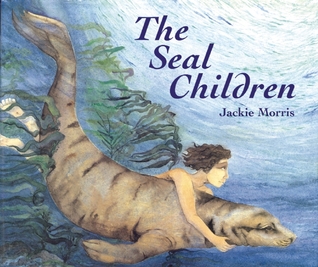
Jackie Morris sets her picture-book version The Seal Children (2016) in a Welsh coastal village close to where she lives. The selkie in this story never forsakes her children Ffion and Morlo and both emerge into new lives as a result of their mother’s love. Blues, mauves and greens blend as land, sea and sky merge in the evocative illustrations in this beautiful book which won the Tír na nÓg Welsh children’s book award and was published in a new edition in 2016.
My fascination with selkie stories has lead me to seek out these tales in a variety of forms and I sometimes chance on other people who are similarly enchanted who give me clues to further variations. I’ve already mentioned the film The Secret of Roan Inish and Secret of Ron Mor Skerry the book that inspired it. Kathryn Graham’s article ‘Seaweed Soup: The Secret (Ingredients) of Roan Inish’ (2000) explores the links between the film and the book. Ireland is also the setting for the animation Song of the Sea (2014), another selkie tale made 20 years after The Secret of Roan Inish.
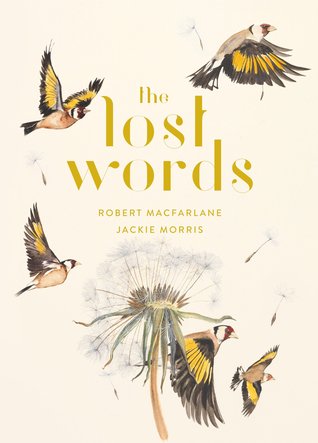
In one of the most recent dives into the world of selkies I came across the song ‘Selkie-boy’ included in the Spell Songs (2019) inspired by The Lost Words (2017) by Robert Macfarlane and Jackie Morris. I am sure that the magic of the selkie will continue to inspire storytellers, writers, artists and musicians for aeons to come.
Works cited
Brahmachari, Sita (illus. Jane Ray) (2018) Corey’s Rock. Burley Gate: Otter-Barry Books.
Davies, Nicola (illus. Claire Jenkins) (2017) The Selkie’s Mate. Llanelli: Graffeg.
Fry, Rosalie K. (2017) Secret of the Ron Mor Skerry. New York Review of Books. First published 1957 under the title Child of the Western Isles.
Graham, Kathryn (2000) Seaweed Soup: The Secret (Ingredients) of Roan Inish. The Looking Glass: New Perspectives on Children’s Literature vol. 4, no.3. https://www.lib.latrobe.edu.au/ojs/index.php/tlg/article/view/287 /284. [Accessed 24/11/2019.]
Hughes, Shirley (1993) Stories by Firelight. London: The Bodley Head. This collection is out of print but the story ‘Sea Singing’ is included in The Shirley Hughes Collection, London: The Bodley Head 2000.
Hunter, Mollie (1975) A Stranger Came Ashore. London: Hamish Hamilton. Reissued Kelpies 1994, 2012.
Laird, Elizabeth (illus. Peter Bailey) (2018) Song of the Dolphin Boy. London: Macmillan.
Macfarlane, Robert and Jackie Morris (2017) The Lost Words. London: Hamish Hamilton.
Mackay, Janis (2009) Magnus Fin and the Ocean Quest. Edinburgh: Floris Books.
Mackay, Janis (2011) Magnus Fin and the Moonlight Mission. Edinburgh: Floris Books.
Mackay, Janis (2012) Magnus Fin and the Selkie Secret. Edinburgh: Floris Books.
Mackay, Janis (2014) (illus. Ruchi Mhasane) The Selkie Girl. Edinburgh: Floris Books.
McClure, Gillian (2015) Selkie. A Scottish Folktale. Ardleigh: Troika Books. First published 1999, London: Doubleday.
Moore, Tomm (director) (2014) Song of the Sea.
Morris, Jackie (2016) The Seal Children. Burley Gate: Otter-Barry Books. First published 2004, London: Frances Lincoln.
Polwart, Karine, Julie Fowlis, Seckou Keita, Kris Drever, Kerry Andrew, Rachel Newton, Beth Porter and Jim Molyneux. The Lost Words. Spell Songs (2019) Folk by the Oak. A musical companion piece. https://www.folkbytheoak.com/line-up/main-stage/the-lost-words-spell-songs/. [Accessed 24/11/2019.]
Sayles, John (director) (1994) The Secret of Roan Inish.
Williamson, Duncan (illus. Chad McCail) (1992) Tales of the Seal People. Edinburgh: Canongate. Reprinted in 2019 as Tales of the Seal People. Scottish Folk Tales, Northampton, MA: Interlink Books.
Williamson, Duncan (ed. Linda Williamson) (2010) Land of the Seal People. Edinburgh: Birlinn.
Ann Lazim is the Literature and Library Development Manager at the Centre for Literacy in Primary Education, London, www.clpe.org.uk, which holds a large collection of traditional tales retold for children. She is a member of the IBBY UK committee, a previous Chair and was co-director of the 2012 IBBY International Congress.
